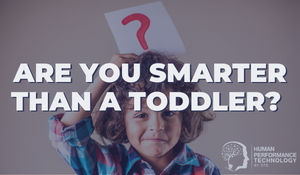3 Powerful Questioning Frameworks
In our last post, (Are You Smarter Than a Toddler?), we explored some fundamentals around asking great questions, by looking at different question types and their respective purposes. In this post, we will explore three popular and powerful questioning frameworks from 3 different disciplines.
Questions are a powerful tool to enhance understanding, build empathy, grow knowledge, create connection/intimacy, improve critical thinking, foster innovation and open ourselves up to other perspectives/ideas. Depending on your goal, a guiding model/framework can serve as a way to organise your questions better, collect the answers you need and structure your conversation to keep it relevant and focused.
A questioning framework can help us maintain focus, so we are not simply asking for the sake of asking. Three very common questioning frameworks from three different disciplines are the GROW coaching model, the SPIN selling model and the STAR behavioural interviewing model. Below we will explain each in brief and how it might be useful.
GROW Model
The GROW framework is a useful guide to help work through a problem or overcome a challenge. GROW is an acronym. Each letter represents a different focus for the questions we might pose at each stage:
- Goal – At this stage, we ask a series of questions to explore the goal or desired outcome.
- Reality – At this stage, we ask a series of questions to explore the current situation or environment in which the problem exists.
- Obstacles/Options – At this stage, we explore what is getting in the way of reaching the desired outcome and the possible options to overcome them.
- Way Forward – At this stage, we explore which option might best reach the desired outcome, as well as who, what, when, where, and how to implement it.
GROW is a great multi-purpose framework that can be used in many situations, including problem-solving (individually or as a group), coaching and even as a sales model.
SPIN Selling
The study revealed that successful sales calls seemed to follow a similar pattern. This pattern was the basis for the SPIN framework. SPIN is another acronym. Each letter represents a different focus for the questions we might pose at each stage:
- Situation - Questions in this stage focus on exploring the current situation or environment from the other person(s) perspective.
- Problem - Questions at this stage focus on exploring the problem faced by the other person(s).
- Implication - Questions in this stage focus on exploring the causes and effects of the problem(s).
- Need/Pay-off - Questions in this stage are a little more challenging to craft. The questions here are designed to help a person(s) connect how your idea/product/service/action can address their pain points. They lead the person(s) answering them to the conclusion that what you are suggesting is a reasonable and viable option for them.
Collecting the information in each of these stages allows us to present a case for an idea, product, service or action that is based on the needs of the situation, solve a problem and have a payoff. Hence the SPIN framework is for more than just salespeople. It is excellent for anyone who is in a situation where they need to persuade or influence someone to take a particular action.
STAR Model
The STAR model is actually a framework to help candidates answer these kinds of questions, but it can be also used as a framework to better understand the traits or skills of a person(s) in a given domain. STAR is yet another acronym. Each letter represents a different focus for the questions we might pose at each stage:
- Situation - Questions in this stage are designed to explore the situation. For example, year, company, role or project.
- Task - Questions in this stage are designed to explore the goal or what was being attempted. For example, achieve X in Y time, reduce costs, increases the number of widgets made.
- Action - Questions in this stage are designed to explore the actions that were taken to complete the task above. For example, implemented a new project management approach, completed a software licence audit, increased staff on the production line.
- Result - Questions in this stage are designed to explore the actual outcome of the actions. The tangible and intangible measures that demonstrated success (or failure).
A questioning framework is a powerful tool to help design an interaction with another person(s). A framework helps to give you structure, keep things on track and drive toward a specific outcome. The purpose of your interaction will dictate the most appropriate framework to use. The next time you have to facilitate a conversation with an individual or group, start with a framework and see how much easier it is to design purposeful interactions.
References
- A Brief History of The Inner Game, An account by Tim Gallwey <Theinnergame.com>
- Whitmore, J 1992, Coaching for Performance, Nicholas Brealey.
- Lucid Content Team n.d, The 4 steps to SPIN Selling, accessed 17 March 2023, <https://www.lucidchart.com/blog/the-4-steps-to-spin-selling>
- Rackman, N 1988, Spin Selling, Gower.
- Rackman, N 1996, SPIN Selling: A Fieldbook, McGraw Hill.
- Gallwey, T 1974, The Inner Game of Tennis, Random House Publishing Group.
- Types of Interviews <Graduatecareers.com.au>
- Wikipedia 2023, Situation, Task, Action, Result, accessed 15 March 2023, <https://en.wikipedia.org/wiki/Situation,_task,_action,_result>

Trevor O'Sullivan
General Manager. Since the early 2000s, Trevor has worked with thousands of Talent Management professionals to develop and apply assessment-based talent management solutions for selecting, developing and managing people. Trevor is an active member of the TTI Success Insights (TTISI) Global Advisory Council, contributes to TTISI product development and is a regular presenter at TTISI-R3. He is honoured to have received multiple Blue Diamond Awards and, more recently, the Bill Brooks Impact Award recognising his contributions to the TTISI global network.


.png?width=374&name=Nutshell%20-%20Behavioural%20Interviewing%20(STAR%20Model).png)
We Would Like to Hear From You (0 Comments)